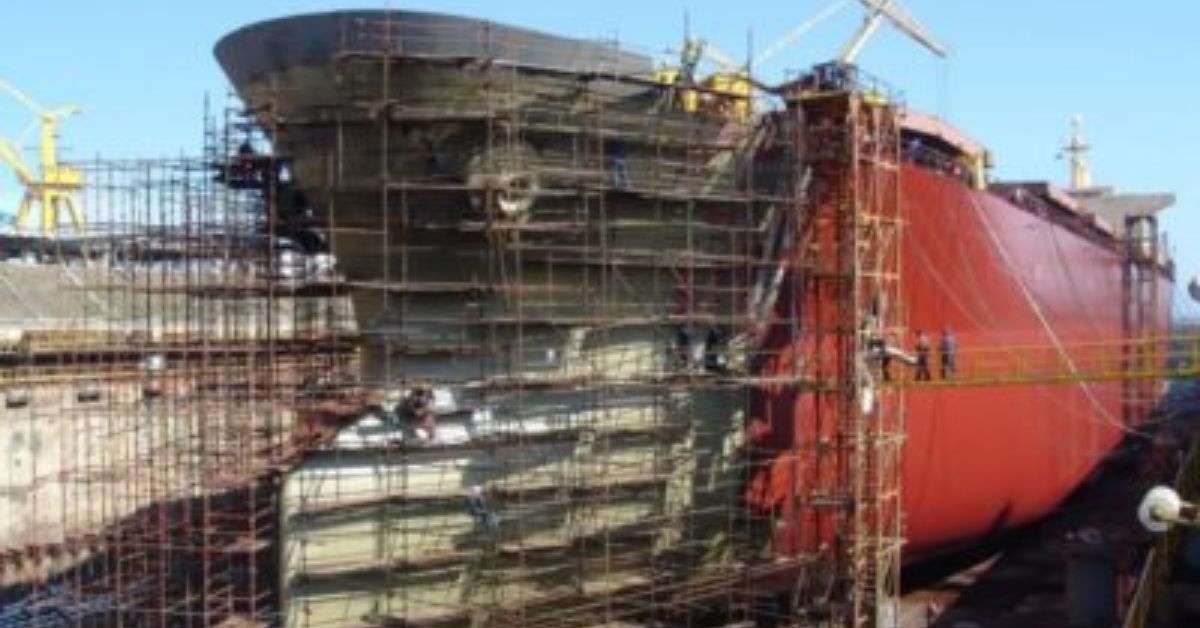In line with the government’s vision of ‘Aatmanirbhar Bharat’, the Ministry of Defence on Thursday signed contracts with Indian shipyards for acquisition of 11 next generation offshore patrol vessels and six next generation missile vessels at a cost of nearly Rs 19,600 crore, officials said.
In line with the government’s vision of ‘Aatmanirbhar Bharat’, the Ministry of Defence on Thursday signed contracts with Indian shipyards for acquisition of 11 next generation offshore patrol vessels and six next generation missile vessels at a cost of nearly Rs 19,600 crore, officials said.
Of the 11 ships, seven will be indigenously designed, developed and manufactured by the Goa Shipyard Ltd (GSL) and four by the Garden Reach Shipbuilders and Engineers (GRSE), Kolkata, the ministry said in a statement.
The delivery of the ships is scheduled to commence from September 2026, it said.
“In a huge boost to achieve ‘Aatmanirbharta’ in defence, Ministry of Defence, on March 30, 2023, signed contracts with Indian shipyards for acquisition of 11 Next Generation Offshore Patrol Vessels and six Next Generation Missile Vessels at an overall cost of approx. Rs 19,600 crore,” the statement said.
The contract for acquisition of 11 next generation offshore patrol vessels under the ‘Buy (Indian-IDDM)’ category was signed with GSL and GRSE at a total cost of Rs 9,781 crore, it said.
The acquisition of these ships will enable the Navy to maintain its combat capability and meet various operational requirements such as anti-piracy, counter-infiltration, anti-poaching, anti-trafficking, non-combatant evacuation operations, search and rescue (SAR) and protection of offshore assets, the statement said.
The construction of these ships will generate an employment of 110 lakh man-days over a period of seven and half years, it added.
The contract for acquisition of six next generation missile vessels (NGMV) was signed with the Cochin Shipyard Limited (CSL) at a cost of Rs 9,805 crore. The delivery of ships is scheduled to commence from March 2027.
“The NGMVs would be heavily armed war vessels incorporating stealth, high speed and offensive capability. The primary role of the ships would be to provide offensive capability against enemy warship, merchantmen and land targets,” the statement said.
These ships will be capable of conducting maritime strike operations, anti-surface warfare operations and would be a “potent instrument of sea denial for enemy ships especially at choke points”, it said.
In the defensive role, these ships would be employed for local naval defence operations and seaward defence of offshore development area.
The construction of these ships will generate an employment of 45 lakh man-days over a period of nine years, it said.
The indigenous manufacturing of these vessels will encourage the active participation of Indian shipbuilding and associated industries, including MSMEs.
With the majority of the equipment and systems sourced from indigenous manufacturers, these vessels will be a proud flag bearer of ‘Aatmanirbhar Bharat’, the ministry said.
The ministry on Thursday also signed contracts for procurement of improved Akash weapon system and 12 weapon locating radars (WLR) ‘Swathi’ (Plains) for the Indian Army at an overall cost of over Rs 9,100 crore, it said in another statement.
The contract for procurement of improved Akash weapon system (AWS) for 3rd and 4th regiments of the Army Air Defence, comprising live missiles and launchers with upgrades, ground support equipment, vehicles and infrastructure,worth over Rs 8,160 crore was signed with the Bharat Dynamics Limited, it said.
The AWS is a short range surface to air missile (SRSAM) air defence system, indigenously designed and developed by the Defence Research and Development Organisation (DRDO).
In order to meet aerial threats, two additional regiments of AWS with upgrades are being procured for the army for the northern borders. Improved AWS has seeker technology, reduced foot print, 360 degree engagement capability and improved environmental parameters, the ministry said.
The project will give a boost to the Indian missile manufacturing industry in particular and the indigenous defence manufacturing ecosystem as a whole. The project has overall indigenous content of 82 per cent which will be increased to 93 per cent by 2026-27, it said.
The induction of the improved AWS into the Indian Army will increase India’s self-reliance in short range missile capability. This project will play a role in boosting the overall economy by avoiding outgo of precious foreign exchange to other countries, increasing employment avenues in India and encouraging Indian MSMEs through components manufacturing, the statement said.
Around 60 per cent of the project cost will be awarded to the private industry, including MSMEs, in maintaining the supply chain of the weapon system, thereby creating large scale of direct and indirect employment, officials said.
The contract for WLR Swathi (Plains) was signed with Bharat Electronic Limited (BEL) at a cost of over Rs 990 crore.
“It is an indigenously designed WLR which is capable of locating guns, mortars and rockets firing own troops, thereby facilitating their destruction through counter bombardment by own firepower resources. This will enable troops to carry out their operational tasks without any interference from the enemy and also provide them safety against enemy fire. Induction is planned to be completed in 24 months,” it said.
This project is a big opportunity for the defence industry to showcase its capability and will be a step in the direction of achieving the goal of ‘Aatmanirbharta’ in defence, the ministry said.








